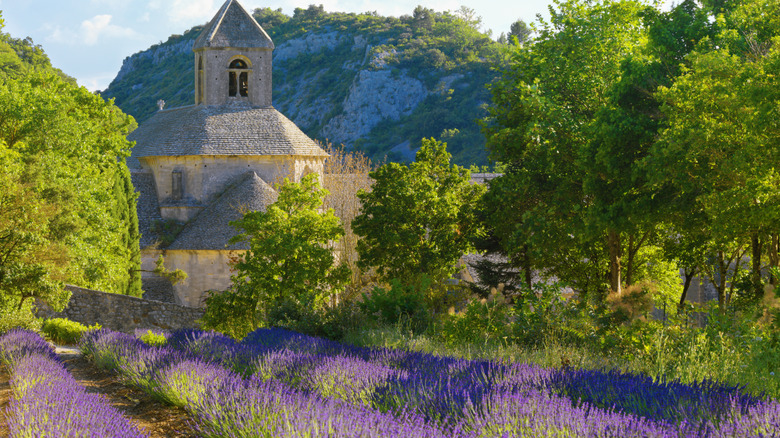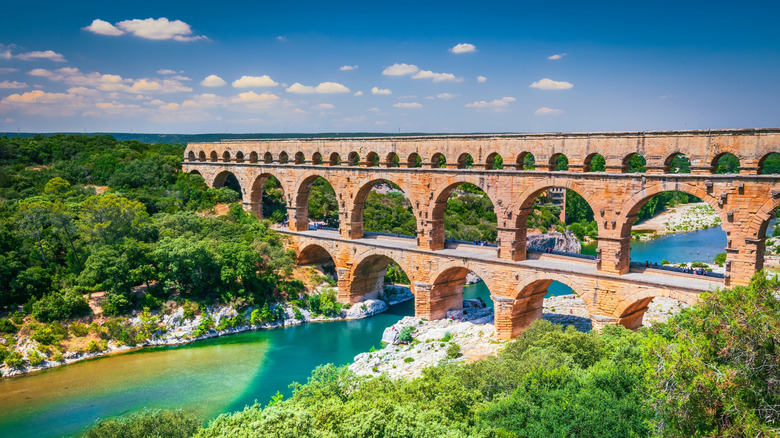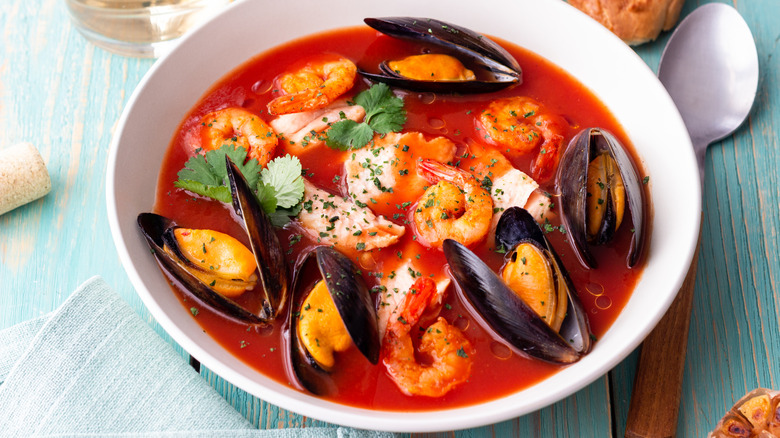The Colorful French Region With 'Intoxicating' Cuisine And Rich History, Per Rick Steves
Paris is probably close to the top of many people's travel bucket lists, but Francophiles know that there is so much to discover about France beyond the Louvre, Champs-Élysées, and Eiffel Tower. Getting out of the capital city will ultimately reward you with some breathtaking natural scenery, wonderful food, and some of the most fascinating attractions in Europe — especially if you visit Provence. This region of southeastern France is lauded for being colorful and vibrant. In fact, France's second-largest city, Marseille, was once called an "overlooked gem" by Rick Steves. And who can we trust to tell us all the best places in Europe, if not Rick Steves?
But Steves has even more compliments for Provence even beyond its adorable villages and gorgeous fields of lavender. According to Steves, Provence has some of the best food in the country and historical sites that harken way back to the days of the Roman Empire. "Roman ruins here are some of the best anywhere. Many scholars claim the best-preserved Roman buildings are not in Italy, but in France," Steves said on his website. If you are interested in a trip to the region, the best way to get there is to fly to either Avignon or Nîmes, or you can opt to start in Marseilles. If your plan is to travel around to many of the different towns and archeological sites, it's best to rent a car so you can see more in less time, but there are also options for hiking, cycling, or using public transit.
Provence has a long history and fascinating archeological sites
If you're starting an Italian vacation in Rome for the first time, the most popular sites are going to be Roman ruins like the Colosseum and the Roman Forum. Still, it's important to remember that the Roman Empire was incredibly vast and spread to many different modern-day countries — including France (once referred to as Gaul). In fact, the region's colloquial name of Provence is in reference to it being the very first province of Rome.
If you're a history buff, you should definitely start your Provence journey in Nîmes, where you'll find the Maison Carrée, a remarkably preserved, square Corinthian temple that goes back to the first century B.C. Nîmes also has an ancient arena (which is still used for some events), a temple devoted to the goddess Diana, towers, aqueducts, and other fascinating sites. It's also home to the Museum of Roman Civilization, which holds thousands of ancient artifacts.
If you're searching for even more ancient sites, it's best to get in a car and tour the many different towns and sites in Provence, including Arles, Glanum, Vaison-la-Romaine, and Orange, to name a few. Also near Nîmes is the Pont du Gard archeological site, a Roman aqueduct and bridge that remains one of the best examples of Roman engineering to this day. The Théâtre Antique d'Orange is also a major site thanks to its long-lasting construction and beautiful design. Orange also has its own Arc de Triomphe that was built in the first century A.D. The entire town of Arles was also an important area in Roman times, so it is also chock full of sites like an amphitheater, circus, baths, a necropolis, and more. There are several tours available through different travel companies that also organize visits to the many archeological sites in Provence if you would prefer not to drive yourself.
The food is just as spectacular as the wine in Provence
Of course, if you need a break from all the ancient exploring, Provence is also a major wine region in France. Taking a wine tour in the area should also be worked into your itinerary between all those archeological sites, especially if you love rosé, a specialty of the region. And like many other wine regions in Europe, Provence is also proud of its culinary offerings as well. Naturally, you'll always want to observe the unspoken rules about dining like a local in France, such as understanding how tipping works in the country. Provencal food is often characterized as surprisingly simple, seasonal, local, and fresh, including classic dishes like Marseille's signature dish, bouillabaisse, which Steves refers to as "intoxicating." The seafood stew, as well as famous dishes like ratatouille and Niçoise salad, originated in this part of France.
Provence is also famous for its olives, which are often used in recipes like tapenade (an olive spread) and pissaladière, a tart made with anchovies, olives, and caramelized onions. And since you're in France, you can't go far without getting some excellent bread like fougasse, which is often twisted into shapes or filled with cheese, herbs, and other flavors. But don't forget that France is also famous for its desserts, and in Provence that includes the fruity marzipan French candy, calisson, and chewy nougat. And if you're looking for a great wine to pair with your meal, be sure to try the local offerings of dry rosé from the Côtes de Provence, rich reds from Bandol, or fresh white wines from Cassis.


